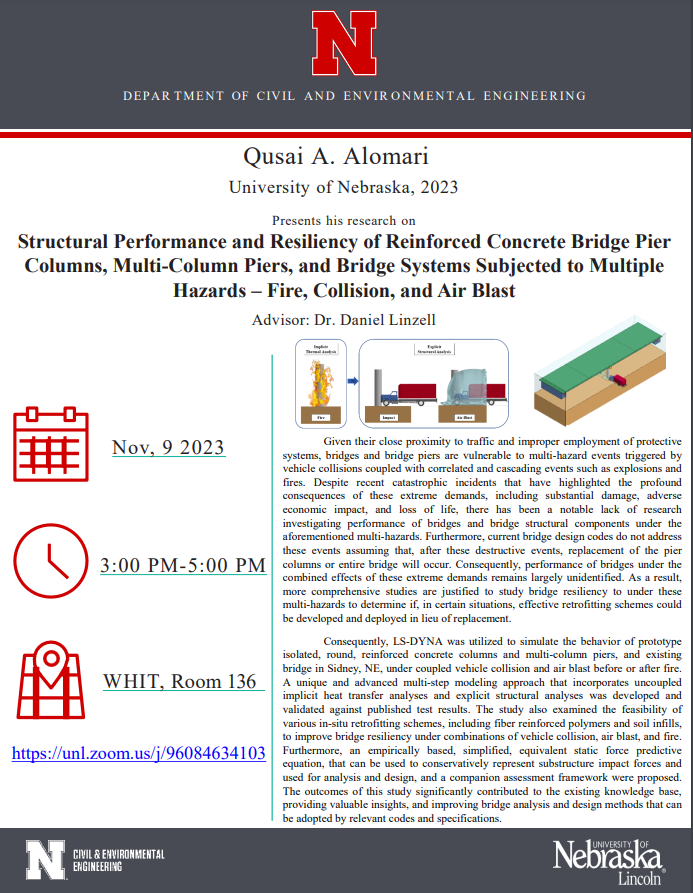
Structural Performance and Resiliency of Reinforced Concrete Bridge Pier
Columns, Multi-Column Piers, and Bridge Systems Subjected to Multiple
Hazards – Fire, Collision, and Air Blast
Given their close proximity to traffic and improper employment of protective
systems, bridges and bridge piers are vulnerable to multi-hazard events triggered by vehicle collisions coupled with correlated and cascading events such as explosions and fires. Despite recent catastrophic incidents that have highlighted the profound consequences of these extreme demands, including substantial damage, adverse economic impact, and loss of life, there has been a notable lack of research investigating performance of bridges and bridge structural components under the aforementioned multi-hazards. Furthermore, current bridge design codes do not address these events assuming that, after these destructive events, replacement of the pier columns or entire bridge will occur. Consequently, performance of bridges under the combined effects of these extreme demands remains largely unidentified. As a result, more comprehensive studies are justified to study bridge resiliency to under these multi-hazards to determine if, in certain situations, effective retrofitting schemes could be developed and deployed in lieu of replacement.
Consequently, LS-DYNA was utilized to simulate the behavior of prototype
isolated, round, reinforced concrete columns and multi-column piers, and existing bridge in Sidney, NE, under coupled vehicle collision and air blast before or after fire. A unique and advanced multi-step modeling approach that incorporates uncoupled implicit heat transfer analyses and explicit structural analyses was developed and validated against published test results. The study also examined the feasibility of various in-situ retrofitting schemes, including fiber reinforced polymers and soil infills, to improve bridge resiliency under combinations of vehicle collision, air blast, and fire. Furthermore, an empirically based, simplified, equivalent static force predictive equation, that can be used to conservatively represent substructure impact forces and used for analysis and design, and a companion assessment framework were proposed.
The outcomes of this study significantly contributed to the existing knowledge base, providing valuable insights, and improving bridge analysis and design methods that can be adopted by relevant codes and specifications.